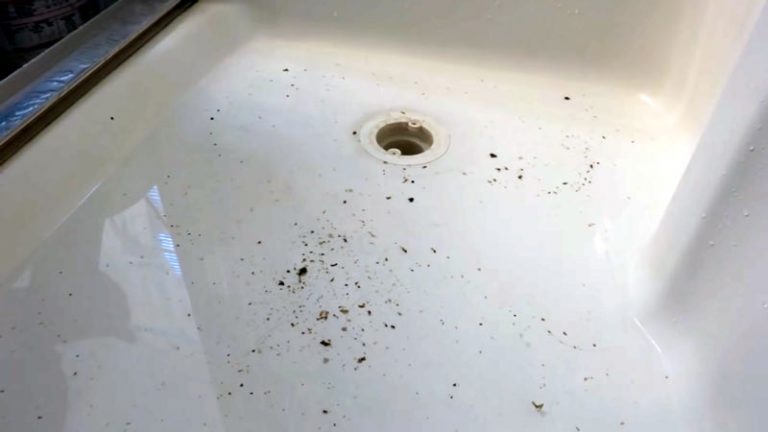Who Can Move a Gas Line? Don’t Risk Your Home on a Guess
You’re in the middle of a dream kitchen remodel. The new layout is perfect, but there’s one major roadblock: the gas line for your stove is on the wrong wall. This common renovation hiccup presents a critical question with serious safety implications: who can move a gas line in a home?
Tackling this job incorrectly is not a simple DIY mistake; it’s a gamble with catastrophic potential. An improperly moved gas line can lead to slow, undetectable leaks, carbon monoxide poisoning, fires, or even explosions. The allure of saving a few hundred dollars is tempting, but the risk to your property and family is immeasurable.
This is not a task for a general handyman or a weekend warrior. Moving a gas line requires specialized knowledge, specific tools, and a deep understanding of local building codes and safety protocols. Making the wrong choice of professional—or attempting it yourself—can have devastating consequences.
You'll Learn About
Why Moving a Gas Line Is a Job for Experts Only
Natural gas is an efficient and safe energy source when contained properly, but it becomes incredibly volatile when mishandled. The work involves much more than simply rerouting a pipe; it’s a precise process governed by strict safety standards that ensure the integrity of the entire gas system.
The dangers of an amateur moving a gas line are severe. Even a minuscule leak at a poorly sealed joint can fill a room with flammable gas over time. The risk of carbon monoxide poisoning is also significant if an appliance is reconnected improperly, leading to incomplete combustion.
The Non-Negotiable Trio: Licensing, Insurance, and Permits
Before any work begins, you must ensure the professional you hire has the correct credentials. This isn’t just about finding someone with experience; it’s about verifying they are legally authorized and insured to perform this high-risk job.
First, always confirm they are a licensed and insured plumber or a qualified gas fitter. Licensing ensures the professional has passed rigorous exams and understands the complex codes governing gas line work. Insurance protects you from liability in the unlikely event of an accident during the project.
Second, moving a gas line almost always requires a permit from your local building department. A permit triggers a mandatory inspection process, where a municipal inspector verifies that the work was completed to code. This third-party verification is a critical safety net that ensures the job was done correctly.
The Right Professionals for the Job: Plumbers vs. HVAC Technicians
When you start searching for a professional, you’ll likely find that both licensed plumbers and some HVAC technicians are qualified to work on gas lines. In most regions, a licensed plumber is the go-to expert for moving interior gas piping for appliances like stoves, dryers, and fireplaces.
HVAC (Heating, Ventilation, and Air Conditioning) technicians are also frequently certified to handle gas lines, especially those connected to furnaces and water heaters. The key is to verify their specific license and experience with residential gas piping relocation. Always ask for proof of their specific gas-fitter certification.
Ultimately, the “right” professional is one who is licensed for gas work in your state, fully insured, and can pull the necessary permits for the job. Do not hesitate to ask for and verify these credentials before hiring.

Beyond the Move: Critical Steps a Professional Will Take
Relocating a gas line is a multi-step process that a qualified expert will follow meticulously. Understanding these steps can help you recognize a true professional and ensure the job is being handled with the necessary care and attention to detail.
The first step is always a thorough assessment. The professional will evaluate the existing gas system, calculate the load requirements for your appliances, and determine the safest, most efficient route for the new line. This planning phase is crucial to avoid issues like insufficient gas pressure for your appliances.
A little-known aspect of this assessment is considering the BTU (British Thermal Unit) load of your new appliance. If you’re upgrading to a high-output professional range, the existing pipe diameter may be too small. A true professional will size the pipe correctly to ensure your new appliance performs as expected and safely.
The Gas Line Relocation Process: What to Expect
Once you’ve hired a qualified professional, the process will follow a strict safety protocol. The main gas supply to your home will be shut off at the meter before any work begins. The system is then purged to remove any residual gas from the lines.
The technician will then disconnect, cut, and reroute the pipe. This may involve running new black iron pipe or flexible corrugated stainless steel tubing (CSST) through walls, floors, or ceilings. All new connections are made using specialized tools and gas-rated sealants to ensure they are airtight.
The most critical final step is the pressure test. The new line is isolated, filled with compressed air to a specific pressure (psi), and monitored with a gauge. This test confirms with certainty that there are no leaks in the new installation, no matter how small.
The Unseen Danger: Why the Pressure Test Is Non-Negotiable
Some contractors might try to cut corners by performing a simple “soap test,” where they apply a soapy solution to the joints and look for bubbles. While this can detect larger leaks, it is not a substitute for a proper pressure test with a manometer. A pressure test can detect minuscule leaks that a soap test would miss.
The duration and required pressure for this test are dictated by local codes. Insist that your contractor performs a full pressure test and that the work passes a municipal inspection. This is your ultimate assurance of safety and quality workmanship.
Moving a gas line is a common part of many home improvement projects, from finishing a basement to a full kitchen overhaul. Perhaps you need to relocate your laundry room, a project that involves more than just plumbing, as detailed in our guide on moving your washer and dryer.
Understanding the Costs of Moving a Gas Line
The cost to move a gas line can vary significantly based on several factors, but it’s crucial not to let price be your only guide. The average cost for a professional to move a gas line typically ranges from $375 to $750, but complex jobs can exceed $1,000.
Factors that influence the final price include the distance the line needs to be moved, the accessibility of the pipe, the type of material used, and the cost of permits in your area. A simple move of a few feet in an unfinished basement will be far less expensive than rerouting a line through finished walls on a second floor.
| Factor | Description | Potential Cost Impact |
|---|---|---|
| Distance of Move | The length of new pipe and fittings required. | Low to High (Costs often quoted per linear foot, from $15 to $25). |
| Accessibility | Whether the pipe is in an open basement or behind finished walls/ceilings. | High (Drywall cutting and repair adds significant labor costs). |
| Pipe Material | Black iron pipe vs. more flexible CSST (Corrugated Stainless Steel Tubing). | Moderate (Material costs can differ, as can labor for installation). |
| Permits & Inspection Fees | Required by local building authorities for safety and code compliance. | Low to Moderate (Typically a flat fee set by the municipality). |
| Pipe Sizing | If a larger diameter pipe is needed for a new, high-BTU appliance. | Moderate (Increases material cost and potentially labor). |
While discussing renovations, it’s worth noting how seemingly small changes can have complex cost implications. For example, the cost of moving plumbing fixtures, like in our article on moving a toilet by just six inches, often surprises homeowners.
The Long-Term Value of a Professional Job
Paying for a licensed and permitted job provides more than just immediate safety; it protects the long-term value of your home. Unpermitted work can create major problems when you decide to sell your property. It can be flagged by a home inspector, potentially derailing a sale or forcing you to have the work redone correctly at a much higher cost.
Furthermore, your homeowner’s insurance policy may deny a claim for a fire or other damage if it’s found to be caused by unpermitted, non-professional gas line work. The initial savings of a cheap, off-the-books job evaporate when faced with these significant financial risks. A minor issue under a sink, like dealing with crumbling particle board countertops, is an inconvenience; a faulty gas line is a catastrophe waiting to happen.
Your Action Plan for a Safe Gas Line Relocation
When you need to move a gas line, there is no room for error. Following a clear, safety-first action plan will ensure the project is completed correctly and without compromising the well-being of your family.
1. Do Not Attempt It Yourself: The risks are far too great. This is a job that requires professional certification and tools.
2. Hire a Licensed Professional: Seek out a licensed plumber or a certified gas fitter. Verify their license and insurance are current.
3. Get Multiple Quotes: Contact at least three qualified professionals to get a detailed, written estimate. This helps you understand the fair market price for the job.
4. Insist on a Permit: Ensure the contractor pulls a permit before any work starts. This is a non-negotiable step that guarantees the work will be inspected for code compliance.
5. Verify the Pressure Test: Discuss the pressure test with your contractor. Confirm they will perform one according to local code and that you will see the passed result before the gas is turned back on.
Moving a gas line is a critical task that underpins the safety of your entire home. By understanding the process, knowing who to hire, and insisting on the highest safety standards, you can proceed with your renovation confidently, knowing the job was done right.


